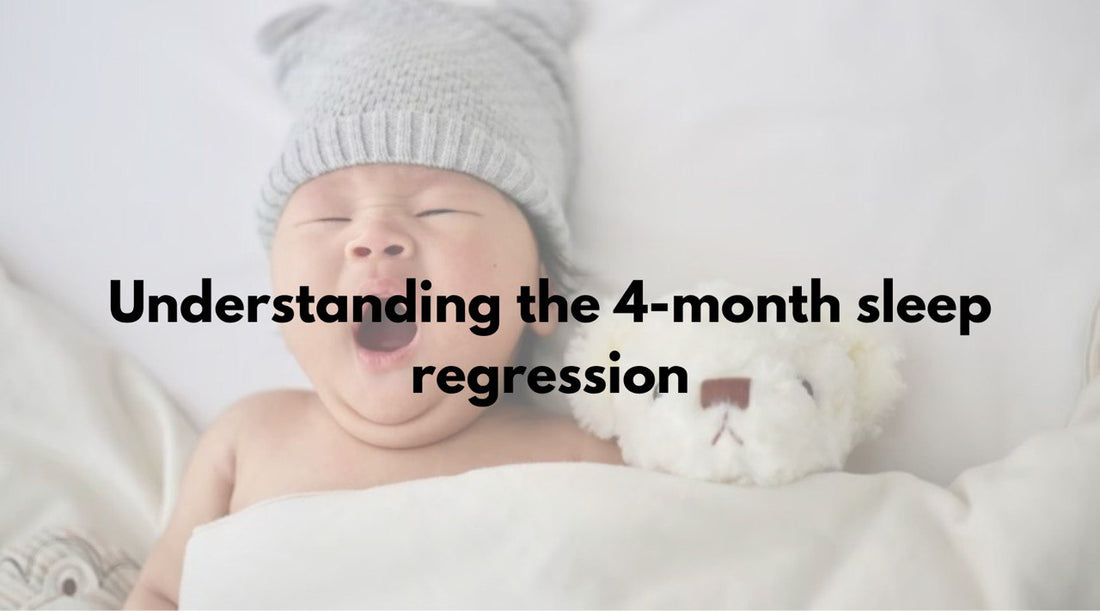
Understanding the 4-month sleep regression
Share
Around three to four months of age, many babies go through a noticeable shift in how they sleep. As they leave the newborn stage, their sleep patterns begin to mature—bringing changes in both the stages and cycles of sleep. These developments are healthy and normal, but they can also lead to sudden challenges for parents.
What is the 4-month sleep regression?
By about 3–4 months, babies start sleeping in distinct cycles that include both light and deep stages of sleep—more like an adult. With this new rhythm, it’s common for them to fully wake at the end of each cycle and need help to drift back to sleep. This can show up as:
-
More frequent night wakings
-
Shorter or disrupted naps
-
Fussiness or difficulty settling at bedtime
Although it’s called a “regression,” it isn’t really a step backward—just a sign of your baby’s growing and changing brain.
Why this shift happens
This stage is driven by natural development rather than a temporary setback. Your baby isn’t losing skills; their maturing nervous system is introducing more adult-like sleep cycles. Because they may not yet know how to fall back asleep independently, these brief awakenings can lead to full wakefulness and calls for your attention.
Developmental changes at 3–4 months
Babies in this age range often wake briefly after each sleep cycle, just as adults do. If they rely on rocking, feeding, or being held to fall asleep at bedtime, they’re likely to want the same help each time they wake. If that comfort isn’t available, you may hear protest cries. This is a normal part of learning how to sleep. Most babies still need some parental support to settle, and that’s perfectly fine.
Signs you may notice
Sudden increase in night wakings.
More crying or fussiness when it’s time to sleep.
Shorter naps or less total daytime sleep.
These signs can appear all at once or only in part, and the timing may vary if your baby was born early.
What happens during the regression
Imagine falling asleep with a pillow under your head, then waking to find it gone—you’d likely wake completely to look for it. Similarly, if a baby falls asleep in your arms and wakes to find themselves alone, they’ll often cry until you provide the comfort they associate with falling asleep. This cycle of waking and seeking help can repeat multiple times each night.
How long it lasts
For some babies, these changes pass in a few weeks as they adjust to new sleep cycles. For others, sleep struggles continue if they still depend on outside help—such as feeding or rocking—to fall asleep. The skill of linking sleep cycles and self-soothing develops gradually, and consistent, gentle guidance from caregivers can help.
Key takeaway
The “4-month sleep regression” is really a sign of healthy growth: your baby’s sleep patterns are maturing. While it can feel exhausting, it’s not a setback. With time and steady routines, your baby will learn to connect sleep cycles and settle more easily, paving the way for more restful nights ahead.
